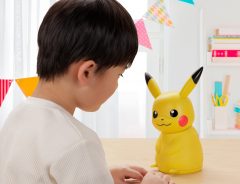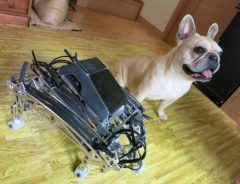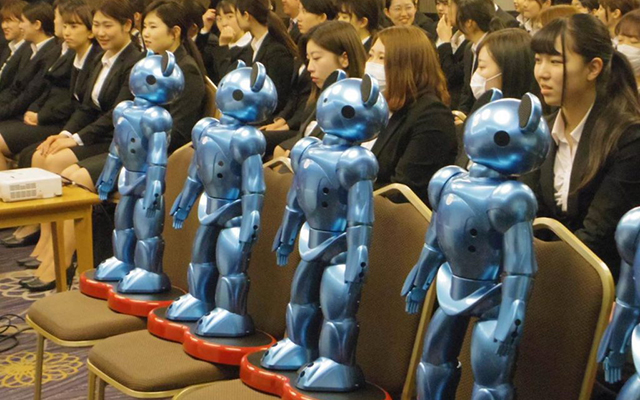- Source:
- © JAPAN Forward
- Tags:
- AI / childcare / ICT / JAPAN Forward / nursery school / Robots / Technology / VEVO
Related Article
-

Treasures along the Arakawa Line: Retro Amusement reopens
-

Curious Cats Adopt Lifelike NieR: Automata Model As Their Adorable Guardian
-

After maid robot café’s successful trial run in Akihabara, creator looks to the future
-

Creepy Thomas The Tank Engine Face Moves On Its Own, Will Crawl Right Into Your Nightmares
-

Singing and dancing Pikachu robot gives adorable Poké-responses to your voice
-

Japanese Robot Dog Powered By Pneumatics Runs As Cute And Clumsy As A Real Pup



Written by The Sankei Shimbun | JAPAN Forward
ICT (Information and Communication Technology), including robots, are starting to be utilized in the childcare industry. Increasingly, advanced technology is becoming available that supports various needs, such as providing fun for children and minimizing office work for childcare staff.
We visited Ai-Ai Nursery School Higashi Ikebukuro, an authorized private day care facility that has introduced ICT into their program.
VEVO the Robot Plays a Human Role
“Hello Fuuka-chan. What are we going to play with today?”
“Aika-chan, it’s very cold today”
Photo by The Sankei Shimbun | © JAPAN Forward
The childcare robot that greeted the 2 sisters is VEVO. The approximately 70 cm tall robot is able to recognize the children’s faces, allowing it to change greetings according to the child to whom it speaks. The sisters returned their greetings to VEVO, and entered the facility while nursery school staff waited nearby. Their father, Shingo Mano, 43, a member of Japan’s Self Defense Force, explained his first encounter with VEVO, saying he was “surprised to seeing robots have infiltrated the world of children”.
VEVO is part of the “Child Care System” (CCS) that supports childcare operations. It was co-developed by Gunma University and Global Bridge Holdings, an affiliated company in the field of childcare and nursing enterprises that specializes in ICT businesses.
Photo by The Sankei Shimbun | © JAPAN Forward
During nap times, a separate sensor attached to the children’s clothing will allow VEVO to monitor their breathing and movements as they sleep. An alarm is triggered if something unusual is detected. Before VEVO, nursery staff needed to check up on the children every 5 minutes and record their napping conditions on paper.
As a “member” of the nursery staff, VEVO supports childcare facilities and the families of the children. Sometimes, when nursery staff with an early shift finish their day, they leave a message with VEVO to give to the parents. When guardians pick up the children, they are briefed on their child’s day. Parents have commented: “After I was informed of the day’s lunch menu, our dinner plans were changed” or “My child only napped for a short time, so we went to bed early”.
Using VEVO to Help Reduce Administrative Burdens
VEVO also plays a huge role in alleviating the burden on nursery school teachers. The robot is able to automatically calculate extension fees and the length of time a child spends at daycare by recording the time the child arrives and leaves the facility. By analyzing the pattern of the children’s time at daycare, the staff’s work shifts can also be more efficiently managed.
Photo by The Sankei Shimbun | © JAPAN Forward
Kyoko Takayama, 40, head of the Ai-Ai Nursery School, said that by reducing manual labor on administrative tasks, staff are better able to concentrate on the duties of actual childcare. In addition, she reported that they were able to save around ¥3.5 million JPY in annual labor costs.
(...)Written by Japan ForwardThe continuation of this article can be read on the "Japan Forward" site.
With Help from Robots, Nursery Teachers Have More Time to Focus on Children